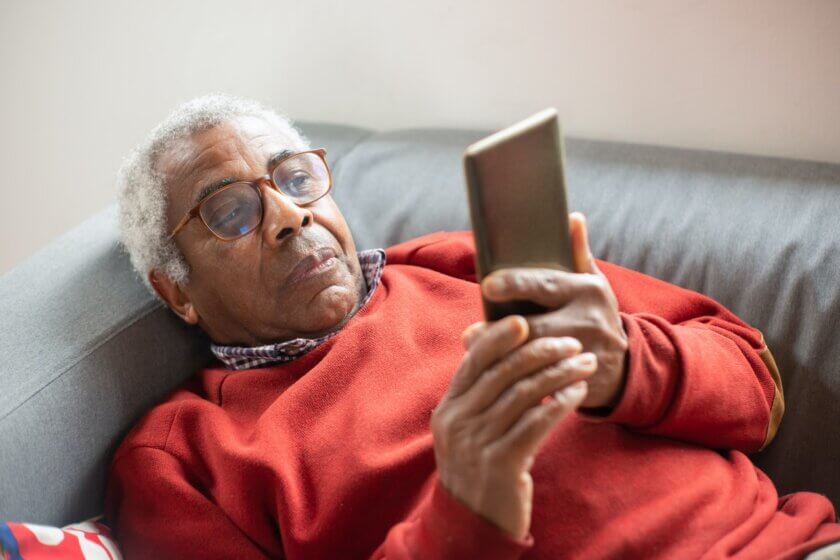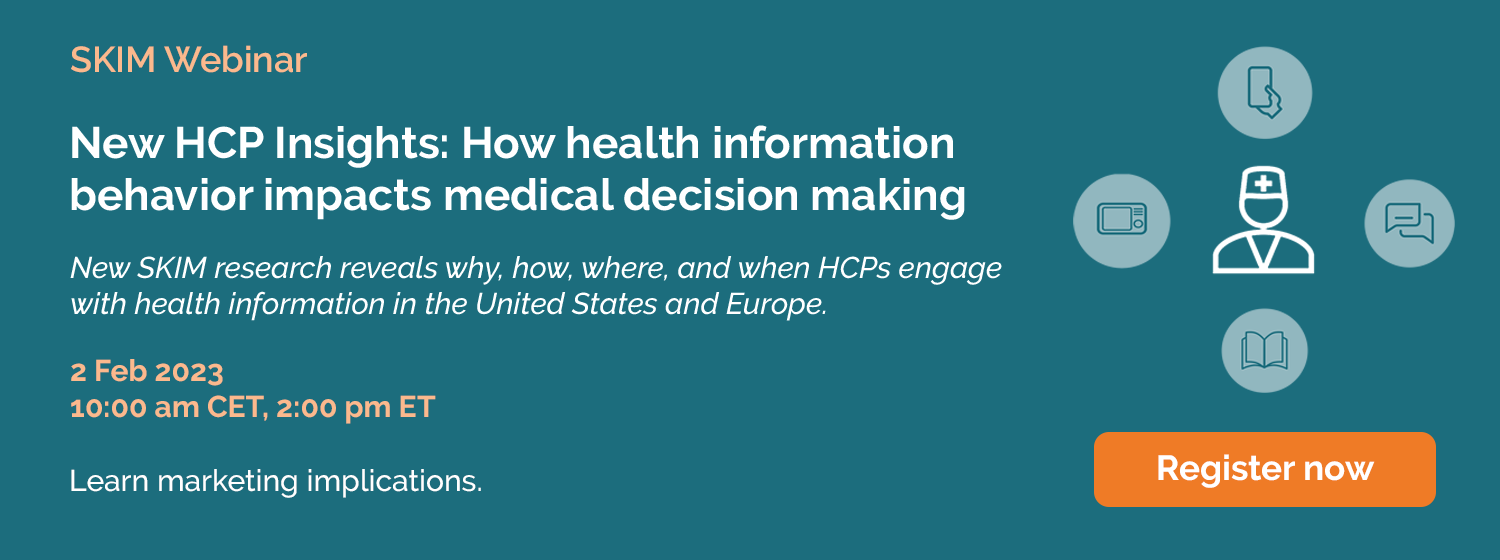In the early days of COVID-19, the head of the World Health Organization stated it was not only fighting a global pandemic, but also an ‘infodemic.’ Since then, COVID-19 has made it painfully clear that timely and trustworthy information is of vital importance to public and individual health, especially when inaccurate or misleading information is on the rise. Whether tackling a global health crisis or battling personal health issues, credible health information is paramount.
If you work in the pharmaceutical or med-tech industries, you know too well how health information, as well as communications and channel strategies, are of greater importance than ever before.
Your company was likely challenged to shift from traditional, face-to-face strategies to digital strategies. Additionally, the acceleration of healthcare digitalization (telehealth) has introduced new patient preferences you must now consider. This evolving landscape gives rise to many short- and long-term implications for healthcare companies: new behaviors, routines, as well as information channels and platforms, must be shaped and built for patients and healthcare professionals (HCPs).
We have seen many questions and issues emerge around information use of patients and HCPs on the one hand, and communication and channel strategies of healthcare companies on the other hand.
To help tackle these questions, our SKIM Healthcare experts set out to better grasp the changing information needs and wants of patients and HCPs. We embarked on an ambitious project to bring together academic research and market research applications. In the first of our blog series, we discuss the importance of health information and introduce new considerations around the concept of the ‘empowered patient.’
Reflecting on health information in our time
Throughout history, health has been considered a most precious possession. “The first wealth is health,” wrote Ralph Waldo Emerson in 1860. Hippocrates, considered the father of modern Western medicine, opinionated that health is of “the utmost value,” and that people therefore have a responsibility to understand personal health matters and be able to “judge what physicians say and what they administer to his body, being versed in each of these matters to a degree reasonable for a layman.”

In our time, health consciousness in everyday life is at an all-time high – even prior to the COVID-19 pandemic. The average person is exposed to more health news than at any point in human history and may encounter health information in a wide variety of digital and traditional mass media channels and sources. This increased availability of health information and news has been fueled by the rise of digital media.
The impact of health information
People from all walks of life – in sickness or in good health – seek out health information. From patients diagnosed with a chronic disease to the average consumer interested in health and wellness; they all want to understand and improve or maintain their health.
Health information is a ‘high-stake’ type of information as it deals with essential aspects of life, namely health and illness or even life and death. It can influence and shape people’s lifestyle choices, improve quality of life, and potentially save lives, while a lack of information or the wrong information can have damaging and dramatic effects.
Health information can educate and empower patients, and impact their medical decision-making. Information is therefore central to the patient experience, underlying the decisions which are taken throughout the patient journey.
The informed vs. empowered patient: Why nuances matter
The prominence of health information is not only a matter of its ubiquitous presence and availability, but also, among others, the result of a trend towards patients and health consumers being informed and empowered. The ideal of the informed or empowered patient has become pervasive. However, there is a subtle difference between being informed or being empowered.
The informed patient acquires information to make sense of their health status. The empowered patient goes a step further and actively participates in their health management and the medical decision-making processes, both inside and outside of the clinical encounter. The empowered patient actively seeks out health information, speaks up and takes (more) control of the clinical encounter, so that the traditional asymmetric relationship between patient and physician becomes a more equal partnership (i.e., shared healthcare decision-making).
However, casting everyone as proactive and empowered health information seekers and decision-makers would be off the mark. After all, patients might be informed and knowledgeable about their health condition, but still prefer to rely on the authority, expertise, and guidance of their physician. Some people do not want to be responsible for their health management, do not want to be given choices, instead feeling reassured by leaving it up to the doctor to make the decisions. Others might want to know as little as possible about their illness and its prognosis and treatment.
Studies have indeed found that there is great variety in the degree to which people want to participate in their healthcare decision-making processes. This behavioral spectrum is confirmed in the market landscaping and segmentation research we conduct for healthcare companies, as well as studies on the role of culture;
There are marked differences between individuals and groups with regards to the level of engagement with their health, openness to and interest in health information, and their level of participation in medical decision-making.
In other words, people have different degrees of involvement with their health condition and how, if at all, they engage with health information.
Considering health information in market research
For the above reasons, many of the in-depth treatment landscaping and patient journey studies we conduct use the Health Information Behavior (HIB) framework. This approach explores patient information needs and use, including questions that seek to understand information channels and sources.

The Health Information Behavior framework leads to more accurate and actionable insights that are relevant to, and can shape, channel and marketing strategies. Companies discover not only how to better inform physicians and patients, but also how to make them aware of, and possibly nudge them towards, certain decisions, treatment paths, and solutions. Based on our global client partnerships, we see first-hand how these insights can better inform healthcare marketing strategies across markets.
Key takeaways
The ideal of the informed or empowered patient is pervasive. However, there is great variety in the degree to which people want to know about their health condition, engage with information, and participate in healthcare decision-making processes.
By zooming in on health information behavior and use in market research, it becomes possible to better understand patient and HCP behavior and decision-making and find ways how to leverage and play into those needs.
—
Subscribe to the SKIMspiration newsletter so you don’t miss the next blog in our series, in which we will introduce the notion of ‘health orientation’ and ‘health information behavior.’ You’ll learn how health information shapes the patient experience and journey.
Can’t wait for the next blog? Reach out to schedule a consultation with the SKIM Health Information Behavior team.

This blog is based on the doctoral dissertation In Sickness And In Health: A Study Of Health Information Behavior And Use Among Flemish Middle-Aged And Older Adults, submitted by the author to Ghent University, Belgium, in early 2021.


